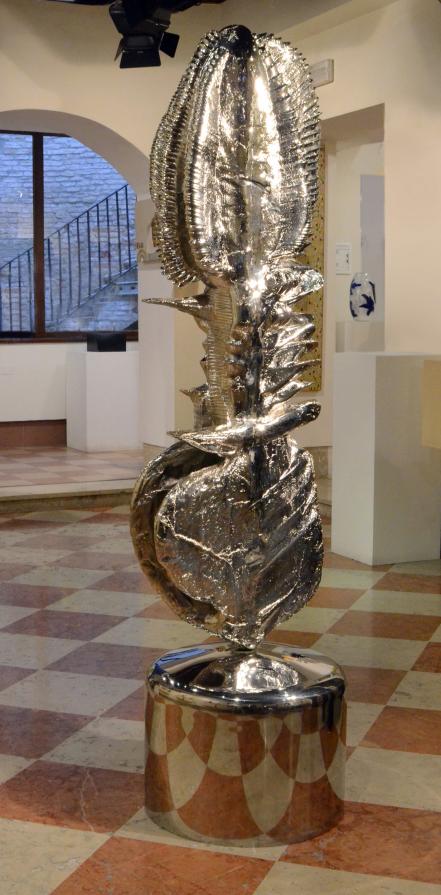Morn of Movement
Born of Movement is also the result of processing, not strictly of copying, but nonetheless still an imprint. In this work, liquid cement was drained into a crate, crossed inside by a web of metal threads in order to interrupt the continuity of the empty.
Zingerle wanted, as he explained, to retain some "freedom" in the sculpture, avoiding both the necessity of modelling and the problems posed by traditional sculpture, which interprets a shape "by removing" -as Michelangelo wanted- or by atelier practices, which define sculpture as working "by adding". The artist attempted to create something else, starting from a free movement of the body and the hand, from a graphic sign which somehow resembles a kind of over-sized fossil with a core, a trunk (vertebrate spine) and a flipper-like appendix. The shape is neither precise nor definable, but rather an echo. Starting from this, Zingerle proceeded to create a shape (negative), i.e. the preparation of the crate and eventually the draining of the cement (neither removing nor adding anything) creating "his", though "not his", sculpture. The resultant sculpture is a basis-shape of large dimensions, standing like a kind of primitive totem, reminding one of ancient seas, of fossils and sediments.Sculpture is, in its nature, ideally divisible into "body" and "surface". I believe that a great part of modern sculpture has been trying for this reason to break and jeopardize this dichotomy. Henry Moore, for example, tried in some crucial works from the series Mother and Child, to reverse the interior to the exterior. Before him Brancusi: his reflection about the surface goes so far, that he damages the existence of the body, contrasting appearance and substance, letting the former prevail (L'inizio del mondo). Zingerle is part of this sequence because he shares the same passionate interest or the need to think about this unavoidable element. “What is surface? Where does it start and where does it finish? What is this thing creating the shape?” These are all questions the artist poses himself, concluding: “In the end, what we see is only light. All and only light.”









Comments 1
Say something